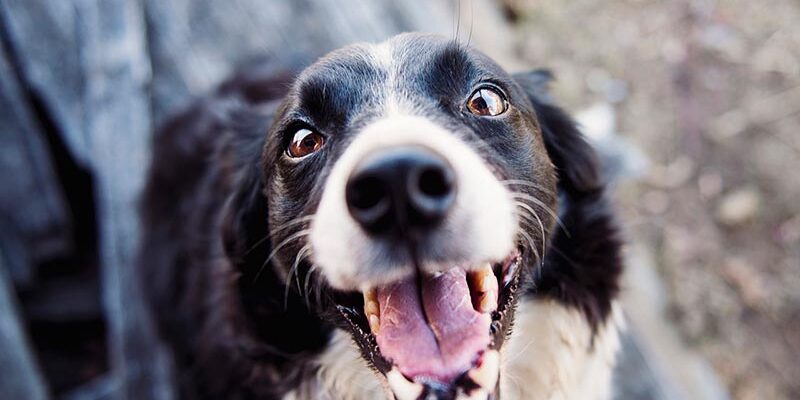Our pets, similar to us, are experiencing great stress when moving. They subtly feel the mood of their owner before moving, notice a change in their familiar surroundings when you are packing household things and furniture.
On the day of the move, unfamiliar people and smells invade their territory. The road to a new home is not the most pleasant journey either. You know precisely where you are going and why, but what do they think and feel? Fear, panic, horror? Unfortunately, our pets have little opportunity to show us their worries.
Therefore, wanting to protect your pets from an excessive anxiety, you can keep it in a special hotel for animals or leave it for a short time with relatives or close friends during the packing period. If you do not have such an opportunity at least try to place pets in a separate room, free from work activity, noise of moving furniture and huge piles of boxes.
Your pet might like empty boxes around your flat or house as you start collecting your household items. However, the initial pleasure of playing with piled cardboard boxes quickly disappears and later on they might soon start to sense that something has gone amiss. And that’s when the anxiety starts to grow.
In addition, any transportation of animals causes serious physical and mental pressure, therefore, be sure to consult a veterinarian in advance about the possibility of using special medications or natural remedies to soothe your pet. A vet can prescribe a course of sedatives a week before moving, which will relieve your pet’s tension.
Transporting your pet to a new location can be a real hardship for you. Here are some helpful tips that will make your and your pet’s move much easier:
Study your route in advance
If you are traveling by car, study your route carefully. Contact your moving company and together choose a route with the zones for recreation and hotels allowing to stay with pets. These nuances provide a good rest not only for your pet, but will relieve you from worrying about it.
Pet’s daily routine
Do your best to maintain your pet’s daily routine steady and balanced. While you are preparing for relocation you are likely have some additional running errands packing up hosehold items and making final arrangements. All through your move to your new place of residence with your pet, it is crucial to keep some regularity to your pet’s routine concerning its feeding, care, and play.
Pet Travel Boxes
Acquire pet cages, crates or tanks that will insure your pet stays in place during your move. A pet carrier is always convenient during long transportation, as well as car harnesses and car mats which will make moving with your pet as fellow traveler trouble free. This will help to cope with the level of anxiety of your pet during the trip and will be useful the first time in your new home. Moreover, they are essential if you have a dog and a cat traveling together since these passengers need to be kept separate.
Veterinary control
Make sure your pet has all necessary vaccinations strictly one month before the trip. Before moving, ask your vet to give you a copy of all of your pet’s medical records in order to give it to your new veterinary. You may also need to find the emergency hospitals for animals along the route and keep the phone numbers accessible.
Refraining from overeating
Most likely, a long journey will upset your pet’s stomach. Before the trip, it is customary to keep your four-pawed buddy on a diet for several hours. It is necessary to limit drinking water for 2 hours before the start of travel as well.
Water supply
Bring a special drinking bowl to the car. Periodically check whether the pet wants to drink.
Personalized pet travel bag
Pack a personalized bag for your pet. The things you should always have at hand while moving include: dry pet food, hygiene products, medicines, plastic bags, a scoop to collect excrements, a bed for your pet, especially if you plan to stay at the hotel during your move.
Comfortable travelling conditions
Make sure the vehicle is kept at an appropriate temperature for your pet. Most pets do not feel comfortable if they are too hot or too cold, and small animals and reptiles are particularly sensitive to temperature changes. Have the highest possible level of control over the temperatures in your vehicle during relocation. Because of reptiles’ sensitivity in particular, you may want to regard the season when moving.
You should also ask the driver to drive as smoothly as possible avoiding any sudden acceleration or braking since abrupt motions can cause anxiety in your pet. It is also necessary to keep from slamming doors. Pets can be particularly impressionable and hypersensitive to sudden vibrations, noises and motions.
Getting settled in a new home
Your pet might be overwhelmed and nervous at the new location at first. When you get to your new home, give the pet time to explore all the rooms. Cats, in particular, enjoy it. Let them take their time and introduce one room at a time. Dog owners are advised to offer their dog a light meaty snack giving them a sense of security in a new place.
Make sure that the windows and doors in the house are securely closed. Cats and dogs that are trying to return to their old home are not a myth. In addition, it is undesirable to take the dog off the leash for several weeks while walking in a new place.
Moving with pets will be much easier and enjoyable if you follow these simple rules.







